| |
 |
|
|
|
| |
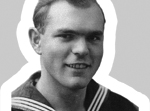 |
Leading Seaman
Kurt Langerwisch
10,5 cm Flak, 6. Division
* 7.10.1916 in Brandenburg - † 28.6.1983
|
 |
|
|


Germany (1916)
Sources:
Saskia Langerwisch (granddaughter) / Freiburg
Bernd Langerwisch (son) / Berlin
Ralf Langerwisch (son) / Ahrensfelde
WASt - Bundesarchiv
Stadtarchiv Brandenburg upon the Havel
|
Kurt Langerwisch was born on October 7, 1916 in the town of Brandenburg upon the Havel. He was the first and only child of Anna Kubiak and Friedrich Friesecke, who was a driver by profession. The parents were not married and soon went their separate ways. On April 3, 1920, Anna Kubiak married the trained locksmith Hermann Langerwisch and took his name. Kurt also received his stepfather's surname. He became a father to him. In 1922 he started elementary school and four years later he attended middle school. He had to leave early at the age of 14 because his parents were unable to continue to raise the money for it due to unemployment. Immediately after graduating from school, the still very young Kurt Langerwisch began an apprenticeship as a decorator at the Siegmund Haagen company. He completed this in 1934 at the age of 17. He then gained his first professional experience at the Flakowski company in Brandenburg. The enterprising Kurt Langerwisch spent his free time canoeing, among other things. He pursued this hobby very successfully in the local canoe club and even became German youth champion in the single Canadian canoe. It was probably also his enterprising spirit that made Kurt Langerwisch so enthusiastic about the navy. Seafaring promised adventure, trips to countries he would propably never see otherwise, and the navy was also a secure employer and the soldiers were well respected by the population. So the nineteen-year-old Kurt Langerwisch applied to join the navy in 1936.
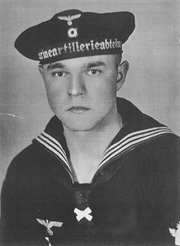 He was called up on October 1, 1936, a week before his twentieth birthday. However, another nine months of basic training and shore commands would pass before Kurt Langerwisch was commanded on board a ship for the first time. Officially, the young sailor was to report on board the light cruiser Königsberg on June 20, 1937, but the ship was on a voyage in Norwegian waters and did not return until a week later. The early days brought many new impressions for Kurt Langerwisch. The Königsberg held firing exercises, set out on a mile-long voyage, and its machinery was overhauled in the shipyard. In September, the autumn maneuvers in the North and Baltic Seas followed. Finally, the knowledge acquired was assessed in an inspection by the Inspector of Naval Artillery. Kurt Langerwisch, recently promoted to senior seaman, was assigned to an anti-aircraft gun leader course at the Coastal Artillery School in Wilhelmshaven after the inspection.
He was called up on October 1, 1936, a week before his twentieth birthday. However, another nine months of basic training and shore commands would pass before Kurt Langerwisch was commanded on board a ship for the first time. Officially, the young sailor was to report on board the light cruiser Königsberg on June 20, 1937, but the ship was on a voyage in Norwegian waters and did not return until a week later. The early days brought many new impressions for Kurt Langerwisch. The Königsberg held firing exercises, set out on a mile-long voyage, and its machinery was overhauled in the shipyard. In September, the autumn maneuvers in the North and Baltic Seas followed. Finally, the knowledge acquired was assessed in an inspection by the Inspector of Naval Artillery. Kurt Langerwisch, recently promoted to senior seaman, was assigned to an anti-aircraft gun leader course at the Coastal Artillery School in Wilhelmshaven after the inspection.
|
|
|
1 The occupation of the Sudetenland was one of the last peaceful annexations in Hitler's aggressive foreign policy.
|
Air defence was now to become the specialty of his seafaring career. The course lasted two months, so Kurt Langerwisch did not return to board the Königsberg until shortly before Christmas 1937. His ship was in the shipyard during this time, which probably gave him the opportunity to go home on holiday over Christmas. The ship's stay in the shipyard ended in February 1938 and training and testing of the ship began again. A highlight was certainly the visit to the town of Königsberg in May 1938, which gave the ship it's name. Several trips as a target ship for submarines, maneuvers and the large fleet parade for the launch of the Prinz Eugen interrupted the regular training program. At the beginning of October 1938, Kurt Langerwisch was deployed as part of the annexation of the Sudetenland, which had until then been Czechoslovakian. It is not known in what form this took place and whether he was directly involved in the invasion with a naval delegation or whether he sailed with the cruiser Königsberg as a cover unit against a possible outbreak of war with England.1 At the end of November, Kurt Langerwisch — now a able seaman —was loaned to the torpedo boat Möwe for two and a half months. This boat had been taken back into service at the beginning of November 1938 after being temporarily decommissioned and needed experienced personnel.
|
|
|
2 Operation "Weserübung" = German occupation of Norway and Denmark
|
A short time later, Kurt Langerwisch was given a new command on land. This took him to the 1st Company of the 1st Schiffstammabteilung in Kiel. He probably worked there as an instructor. In the summer of 1939, shortly before the start of the war, he was withdrawn for a month and a half and assigned to the artillery test command of the battleship Gneisenau. With the ship he went into the South Atlantic, where a training trip lasting several weeks was completed together with the supply ship Westerwald.
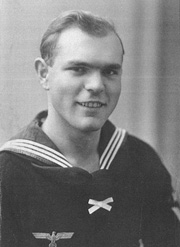 After the war began, Kurt Langerwisch was probably sent to the Sperrschule in Kiel for a course. A month later, he was assigned to board the cruiser Karlsruhe. The Karlsruhe was a sister ship of the Königsberg and thus something of an old confidante for Kurt Langerwisch, on which he quickly found his way around. As the cruiser had just completed a lengthy period of reconstruction, a new crew was put together. Commissioning on November 13, 1939 was followed by training and testing, which was under the time pressure of the war and had to contend with the restrictions of a harsh winter. Although the Karlsruhe was not yet fully ready for war, it was called upon to participate in Operation "Weserübung"2. This proved to be its downfall. After the Karlsruhe had completed its mission and the army troops on board had occupied Kristiansand, it was torpedoed on the way back on 9 April 1940 by the British submarine HMS Truant. A torpedo hit and disabled the engine system and the bilge pumps. The cruiser slowly began to sink. An hour after the hit, Kurt Langerwisch and the other crew members transferred to the accompanying torpedo boats, which finally dealt the Karlsruhe its fatal blow. Kurt Langerwisch escaped with a fright. One day after his rescue, he received the news that his first ship, the Königsberg, had also sunk after being hit by bombs in Norway. For him, the war went on. Like most of his comrades, he was given a new command on the battleship Bismarck. This was being completed at Blohm & Voss in Hamburg. The first few months until commissioning were taken up by construction instructions.
After the war began, Kurt Langerwisch was probably sent to the Sperrschule in Kiel for a course. A month later, he was assigned to board the cruiser Karlsruhe. The Karlsruhe was a sister ship of the Königsberg and thus something of an old confidante for Kurt Langerwisch, on which he quickly found his way around. As the cruiser had just completed a lengthy period of reconstruction, a new crew was put together. Commissioning on November 13, 1939 was followed by training and testing, which was under the time pressure of the war and had to contend with the restrictions of a harsh winter. Although the Karlsruhe was not yet fully ready for war, it was called upon to participate in Operation "Weserübung"2. This proved to be its downfall. After the Karlsruhe had completed its mission and the army troops on board had occupied Kristiansand, it was torpedoed on the way back on 9 April 1940 by the British submarine HMS Truant. A torpedo hit and disabled the engine system and the bilge pumps. The cruiser slowly began to sink. An hour after the hit, Kurt Langerwisch and the other crew members transferred to the accompanying torpedo boats, which finally dealt the Karlsruhe its fatal blow. Kurt Langerwisch escaped with a fright. One day after his rescue, he received the news that his first ship, the Königsberg, had also sunk after being hit by bombs in Norway. For him, the war went on. Like most of his comrades, he was given a new command on the battleship Bismarck. This was being completed at Blohm & Voss in Hamburg. The first few months until commissioning were taken up by construction instructions.
|
|
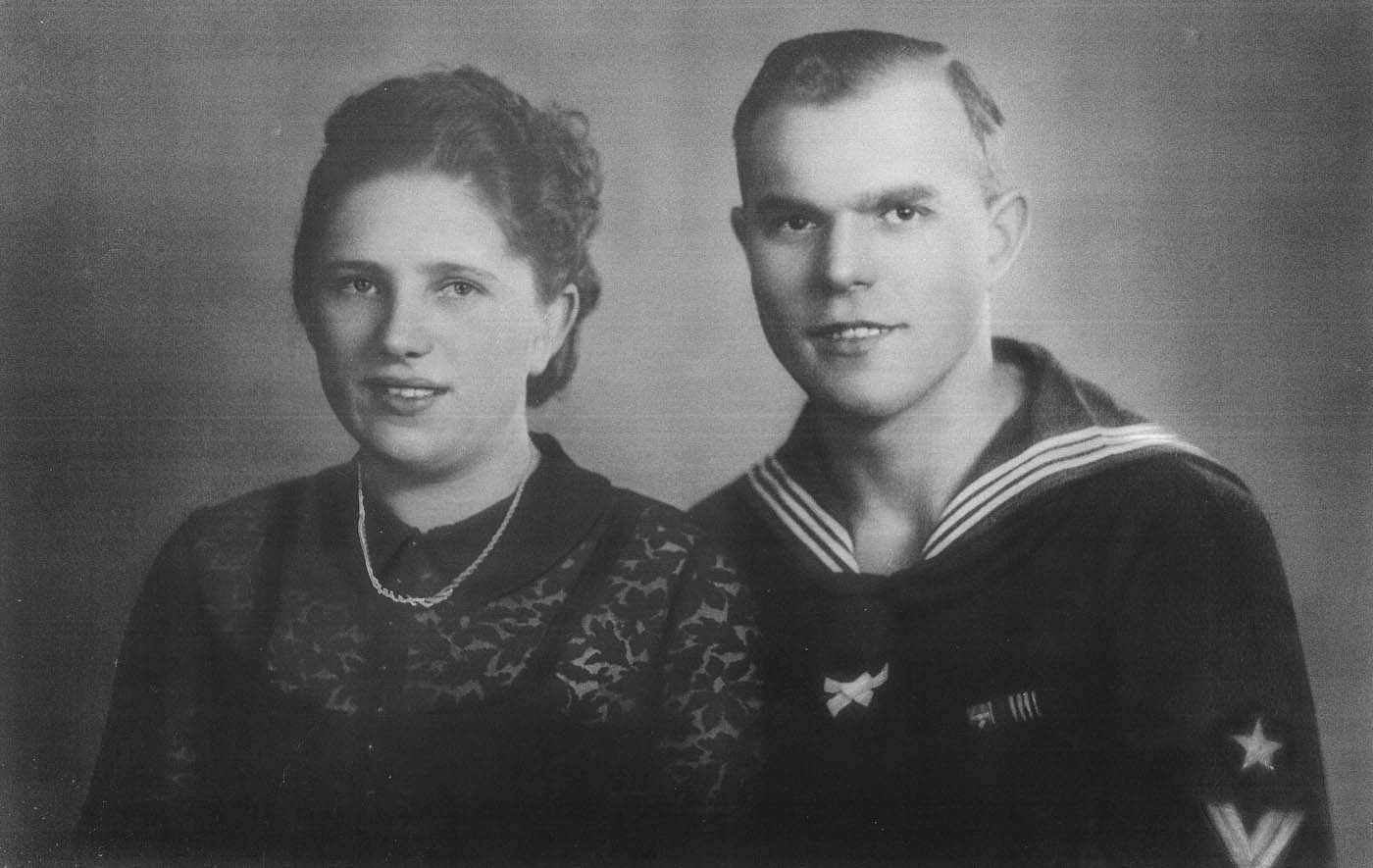 Wedding of Kurt and Doris Langerwisch |
|
|
The summer of 1940 was mainly marked by private joy for Kurt Langerwisch. On July 16, he married his fiancée Doris Prasno, who came from the Hanseatic city of Danzig. The wedding was celebrated at the registry office in Kirchmöser, a small town opposite the city of Brandenburg, where the Prasno family now lived. Kurt Langerwisch had been given leave for the celebration, but soon had to return to Hamburg. The Bismarck was commissioned there in August 1940. The training and testing of the ship now began. In October, Kurt Langerwisch was promoted to leading seaman, making him one of the most experienced crew members on board. His combat station was one of the 10.5 cm anti-aircraft guns and he belonged to the 6th Division. During his time in Hamburg there were frequent air raid warnings and the ship's anti-aircraft guns were sometimes used to fend off air raids on the city. For Kurt Langerwisch and his comrades this meant permanent readiness, alternating with the 5th Division. The situation eased when the ship was moved to Danzig Bay, as this was still outside the range of British bombers. The actual anti-aircraft gun practice took place in April 1941. One month later Kurt Langerwisch set off on his second combat patrol on the Bismarck. As part of the anti-aircraft defence, he was called upon several times during the operation when British reconnaissance planes shadowed the ship and torpedo planes attacked. However, the defence was unsuccessful and no enemy aircraft were shot down. Instead, it was the torpedo planes that dealt the decisive hit to the Bismarck's rudder system and left the ship unable to maneuver, subject to the destruction of its own battleships. Kurt Langerwisch was probably unable to intervene in the final battle as the heavy anti-aircraft guns were ineffective against the enemy battleships. As a result, all he could do was wait for the end of the battle, the terrible images of which would remain etched in his memory for the rest of his life. He saw his best friend's head roll out of one of the gun emplacements, which had been shaved off by the constant bombardment. During the last hours on board the Bismarck, Kurt Langerwisch and other survivors were literally up to their ankles in the blood of their comrades.
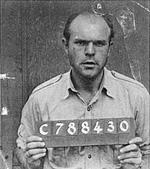 He was very lucky to survive the battle and was able to escape from the sinking ship into the cold Atlantic. Completely exhausted from his fight for survival in the water, he reached the British cruiser HMS Dorsetshire. He clung to a rope and was pulled on board. They thought he was dead and wanted to throw him overboard again. When they tried to pull the wedding ring from his finger, he showed signs of life and was saved. His rescue marked the beginning of Kurt Langerwisch's captivity, which took him first to England and later to Canada. He later described the eventful time in Canada, where he worked as a lumberjack together with other survivors and during which he was well treated and very well looked after, as one of the most beautiful periods of his life.
He was very lucky to survive the battle and was able to escape from the sinking ship into the cold Atlantic. Completely exhausted from his fight for survival in the water, he reached the British cruiser HMS Dorsetshire. He clung to a rope and was pulled on board. They thought he was dead and wanted to throw him overboard again. When they tried to pull the wedding ring from his finger, he showed signs of life and was saved. His rescue marked the beginning of Kurt Langerwisch's captivity, which took him first to England and later to Canada. He later described the eventful time in Canada, where he worked as a lumberjack together with other survivors and during which he was well treated and very well looked after, as one of the most beautiful periods of his life.
|
|
|
3 SED = Socialist Unity Party of Germany
FDGB = Free German Trade Union Federation
|
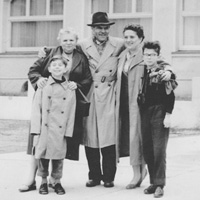 After the war, he had to work in England to make amends before being transferred back to Germany in the Munster camp. From there, he was released from captivity in January 1947 and returned to his hometown of Brandenburg. This was in the Soviet-occupied zone. The town had been badly affected by the war. But this was certainly of secondary importance to him at that moment, because after almost seven years, he could finally return to his wife Doris. Kurt Langerwisch would have liked to emigrate with his wife to Canada, which he had fond memories of from his time as a prisoner, but that was not possible at that time. That same year, his wife became pregnant and so Kurt Langerwisch, who was now 30 years old, had to make sure that he quickly found a job again. He could not continue his previous work as a decorator in the destroyed city because there was nothing left to decorate. So from May 1947 he attended a Russian teacher training college and from the following year taught as a language teacher and trainee teacher at the primary school in Glindow and later at the Goethe School in Brandenburg. On November 10, 1947, his first son, Bernd, was born, followed three years later by another son named Ralf. In the meantime he had established himself in his new profession, had passed his teacher's exam with an overall grade of good and had joined the SED, the FDGB3 and other associations. From 1950 he worked as a teacher and school principal at various schools in Brandenburg. After that he was a school inspector and later a city school inspector for the city of Brandenburg. However, his family situation became increasingly difficult, as his youngest son required special care due to early diabetes and his wife also had to deal with health problems. In order to be able to devote more time to his family, Kurt Langerwisch finally asked to be released from his position as city school inspector and transferred back to teaching. His last job was in 1966 as head of the Otto Gartz High School, where he taught Russian, English and history. He remained there until his retirement in 1981. In the summer of 1977, Kurt Langerwisch lost his wife, three weeks before their thirty-seventh wedding anniversary. He later married a second time.
After the war, he had to work in England to make amends before being transferred back to Germany in the Munster camp. From there, he was released from captivity in January 1947 and returned to his hometown of Brandenburg. This was in the Soviet-occupied zone. The town had been badly affected by the war. But this was certainly of secondary importance to him at that moment, because after almost seven years, he could finally return to his wife Doris. Kurt Langerwisch would have liked to emigrate with his wife to Canada, which he had fond memories of from his time as a prisoner, but that was not possible at that time. That same year, his wife became pregnant and so Kurt Langerwisch, who was now 30 years old, had to make sure that he quickly found a job again. He could not continue his previous work as a decorator in the destroyed city because there was nothing left to decorate. So from May 1947 he attended a Russian teacher training college and from the following year taught as a language teacher and trainee teacher at the primary school in Glindow and later at the Goethe School in Brandenburg. On November 10, 1947, his first son, Bernd, was born, followed three years later by another son named Ralf. In the meantime he had established himself in his new profession, had passed his teacher's exam with an overall grade of good and had joined the SED, the FDGB3 and other associations. From 1950 he worked as a teacher and school principal at various schools in Brandenburg. After that he was a school inspector and later a city school inspector for the city of Brandenburg. However, his family situation became increasingly difficult, as his youngest son required special care due to early diabetes and his wife also had to deal with health problems. In order to be able to devote more time to his family, Kurt Langerwisch finally asked to be released from his position as city school inspector and transferred back to teaching. His last job was in 1966 as head of the Otto Gartz High School, where he taught Russian, English and history. He remained there until his retirement in 1981. In the summer of 1977, Kurt Langerwisch lost his wife, three weeks before their thirty-seventh wedding anniversary. He later married a second time.
|
|
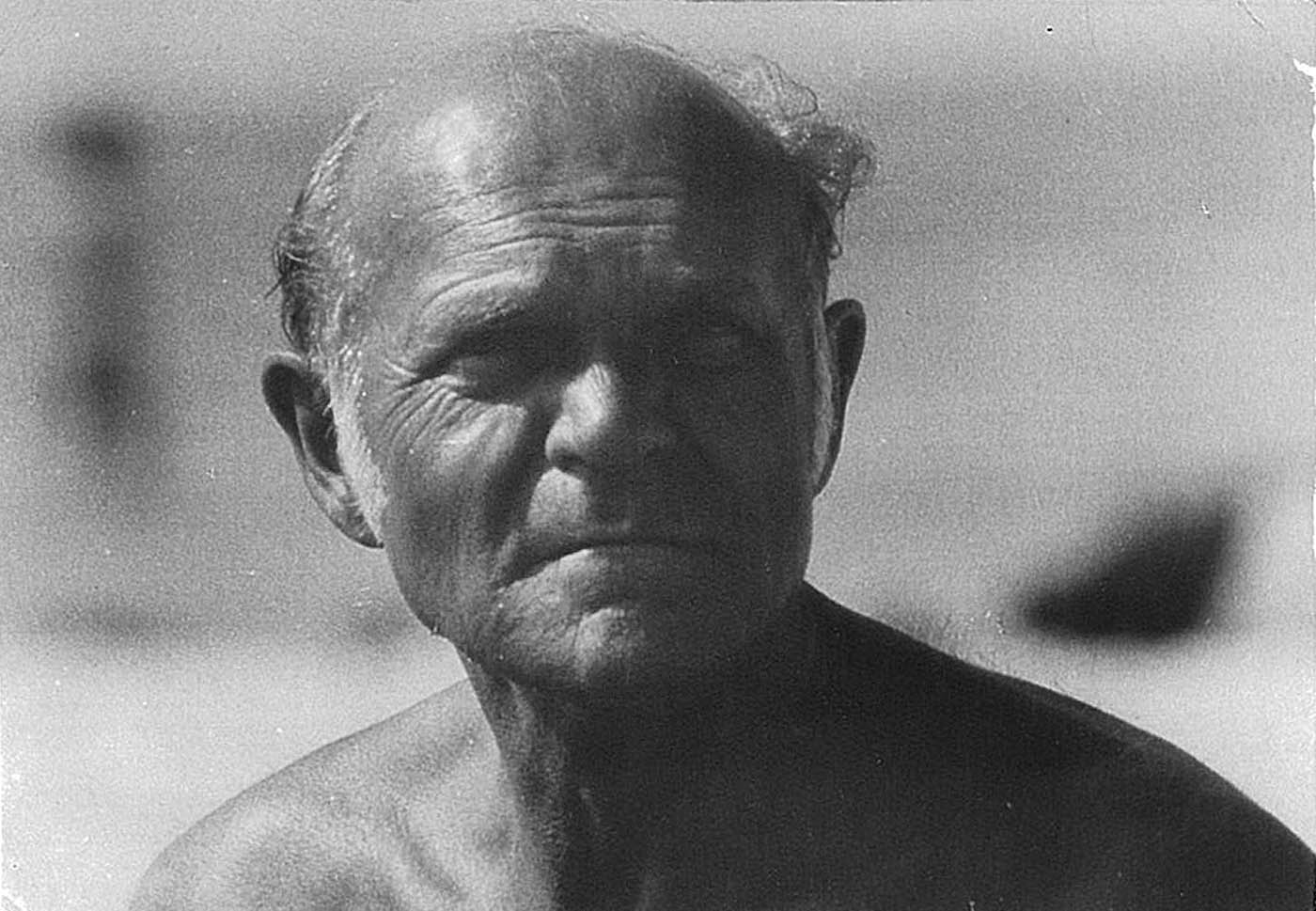 Kurt Langerwisch in old age |
|
|
Kurt Langerwisch was very much looking forward to his retirement. He devoted the time he gained to his family and above all to canoeing. "Until the end, he loved to go canoeing on the Brandenburg Havel when the weather was nice." remembered his granddaughter. Kurt Langerwisch was not only adventurous, but also a very humorous and sociable person, whose open-minded nature and his always positive attitude to life were particularly remembered by his relatives. His granddaughter remembers: "Once, when I was visiting him with my parents, he sang in his deep voice the then popular hit by Udo Jürgens, 'At 66, life begins...' I found it very funny and sang along because the song suited my grandfather's age and character so well, without having the slightest idea that his 66th birthday would be his last." On the morning of June 27, 1983, Kurt Langerwisch suffered severe injuries in a tragic traffic accident on the way to the pier when he collided with a tram. He died a day later on June 28, 1983, at the age of 66. Kurt Langerwisch always regretted that he had not been able to meet the other survivors of the Bismarck in West Germany. He would have loved to write a book about his experiences on the ship and during his imprisonment, but the circumstances in the former GDR did not allow this. In addition to his second wife, he left behind the families of his two sons and two grandchildren, who of course would never have existed without his fortunate rescue after the sinking of the Bismarck. His three great-grandchildren never knew him.
|
|
|